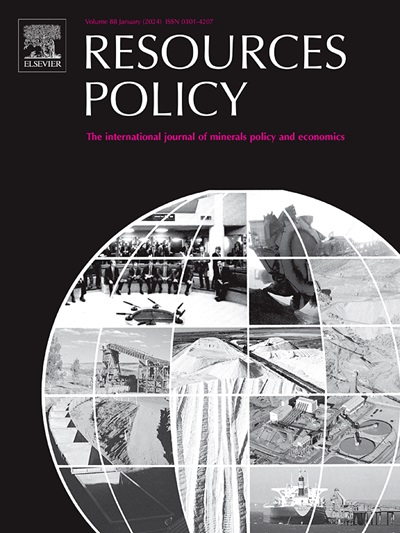Allocating child labor in resource production to the global transport sector
IF 10.2
2区 经济学
0 ENVIRONMENTAL STUDIES
引用次数: 0
Abstract
The United Nations Sustainable Development Goal 8 targets the eradication of child labor by 2050. Despite this goal, approximately 160 million children globally are engaged in child labor, with 79 million involved in hazardous work and 16.5 million in industrial sectors. Over a million children work in mining, which exposes them to significant health and safety risks and deprives them of educational opportunities. The anticipated increase in demand for minerals used in electric vehicles and batteries by 2040 will further elevate social risks in supply chains. This study quantifies the responsibility pathways of child labor within the transport equipment sectors in China, Germany, Japan, and the United States to enhance the management of human rights due to diligence. A multi-regional input–output (MRIO) model was developed to analyze child labor across agriculture, industry, and service categories, incorporating newly collected data on mining-related child labor. They also highlighted a significant link between child labor and gold mining operations. These findings underscore the urgent need to improve due diligence practices and investments in technologies that promote fair-trade and ethical sourcing. By recognizing interindustry connections and prioritizing ethical practices, this study establishes a foundation for future efforts to enhance transparency and sustainability in the transport equipment sector.
将资源生产中的童工分配给全球运输部门
联合国可持续发展目标8旨在到2050年消除童工现象。尽管有这一目标,但全球约有1.6亿儿童从事童工劳动,其中7900万儿童从事危险工作,1650万儿童在工业部门工作。100多万儿童在采矿业工作,这使他们面临重大的健康和安全风险,并剥夺了他们受教育的机会。预计到2040年,电动汽车和电池使用的矿物需求将增加,这将进一步提高供应链的社会风险。本研究量化了中国、德国、日本和美国运输设备行业的童工责任路径,以加强勤勉人权管理。建立了一个多区域投入产出(MRIO)模型,用于分析农业、工业和服务业的童工情况,并纳入了新收集的与采矿有关的童工数据。他们还强调了童工和金矿开采之间的重要联系。这些发现强调了迫切需要改善尽职调查实践和技术投资,以促进公平贸易和道德采购。通过认识到行业间的联系和优先考虑道德实践,本研究为未来提高运输设备行业的透明度和可持续性奠定了基础。
本文章由计算机程序翻译,如有差异,请以英文原文为准。
求助全文
约1分钟内获得全文
求助全文
来源期刊

Resources Policy
ENVIRONMENTAL STUDIES-
CiteScore
13.40
自引率
23.50%
发文量
602
审稿时长
69 days
期刊介绍:
Resources Policy is an international journal focused on the economics and policy aspects of mineral and fossil fuel extraction, production, and utilization. It targets individuals in academia, government, and industry. The journal seeks original research submissions analyzing public policy, economics, social science, geography, and finance in the fields of mining, non-fuel minerals, energy minerals, fossil fuels, and metals. Mineral economics topics covered include mineral market analysis, price analysis, project evaluation, mining and sustainable development, mineral resource rents, resource curse, mineral wealth and corruption, mineral taxation and regulation, strategic minerals and their supply, and the impact of mineral development on local communities and indigenous populations. The journal specifically excludes papers with agriculture, forestry, or fisheries as their primary focus.
 求助内容:
求助内容: 应助结果提醒方式:
应助结果提醒方式:


